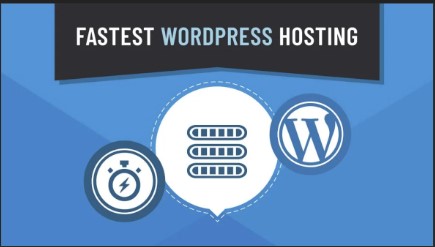Buy Webhost
In the digital age, web hosting plays a crucial role in making websites accessible over the internet. It involves storing website files on servers that are connected to the internet, ensuring they can be accessed by users worldwide.
What is Web Hosting?
- Definition and Basics of Web Hosting
Web hosting refers to the service that allows individuals and organizations to make their websites accessible via the World Wide Web. It involves storing website files on servers that are hosted and maintained by hosting providers. - Importance of Choosing the Right Web Hosting Provider
Selecting a reliable web hosting provider is critical for ensuring your website remains accessible, secure, and performs well. It impacts factors like site speed, uptime, security, and customer support. - Types of Web Hosting Services Available
There are various types of web hosting services tailored to different needs:
– Shared Hosting: Affordable and suitable for small websites with moderate traffic.
– VPS Hosting: Provides dedicated resources within a virtual environment, ideal for growing websites.
– Dedicated Server Hosting: Offers exclusive use of a physical server, suitable for high-traffic websites.
– Cloud Hosting: Scalable and flexible hosting that uses cloud resources, ideal for dynamic websites.
Factors to Consider Before Buying Web Hosting
- Assessing Your Website’s Needs and Requirements
Understanding your website’s traffic volume, scalability requirements, storage needs, and performance expectations is crucial before selecting a hosting plan. - Evaluating Different Types of Web Hosting
Each type of hosting has its advantages and is suitable for different website requirements. Assess factors like performance, security, scalability, and cost-effectiveness. - Budget Considerations and Pricing Models
Compare the cost of different hosting plans against the features and resources offered. Consider long-term costs, including renewal prices and any additional fees.
Choosing the Best Web Hosting Provider
- Researching and Comparing Hosting Providers
Conduct thorough research on hosting providers, focusing on their reputation, customer reviews, and years in business. Look for reliability, performance guarantees, and uptime commitments. - Understanding Server Reliability and Uptime
Ensure the hosting provider offers a high uptime guarantee with redundant systems and backup measures to minimize downtime. - Monitoring and Maintenance Practices
Check how the provider monitors server performance and handles maintenance tasks to ensure your website operates smoothly.
Essential Features of a Good Web Hosting Service
- Performance and Speed Optimization
Look for features like SSD storage, Content Delivery Networks (CDNs), and caching mechanisms to enhance website speed and performance. - Security and Data Protection Measures
Ensure the hosting provider offers SSL certificates, robust firewall protection, and malware scanning to safeguard your website and visitor data. - Control Panel and User Interface
A user-friendly control panel with customization options and management tools simplifies website management tasks.
Additional Services and Add-ons
- Domain Name Registration and Management
Check if the provider offers domain registration services, including options for DNS management and domain privacy to protect personal information. - Email Hosting and Communication Tools
Evaluate email hosting features such as the number of accounts, spam filtering, and security protocols to support communication needs. - Website Builder and CMS Integration
Compatibility with popular Content Management Systems (CMS) like WordPress or Joomla, and support for one-click installations and website migration.
Customer Support and Service Quality
- Access to Technical Support
Look for hosting providers that offer 24/7 support through multiple channels such as phone, email, and live chat, with quick response times. - Customer Satisfaction and Feedback
Review case studies, testimonials, and customer feedback to gauge overall satisfaction and the provider’s approach to handling support issues.
Steps to Purchase and Setup Web Hosting
Expanding on the steps to purchase and set up web hosting involves several key considerations to ensure a smooth and effective process:
1. Assess Your Needs:
Before purchasing web hosting, assess your website’s requirements. Consider factors such as expected traffic volume, type of content (static or dynamic), and any special software or applications (like e-commerce platforms or content management systems) you plan to use.
2. Research Hosting Providers:
There are various types of hosting providers, including shared hosting, VPS (Virtual Private Server), dedicated hosting, and cloud hosting. Research different providers to find one that aligns with your needs regarding performance, scalability, security, and budget.
3. Compare Plans and Features:
Once you’ve identified potential providers, compare their hosting plans and features. Pay attention to aspects such as storage capacity, bandwidth limits, uptime guarantees, security measures (like SSL certificates and firewalls), and customer support options.
4. Select a Hosting Plan:
Choose a hosting plan that best suits your current needs and allows for future scalability. Start with a plan that offers sufficient resources but allows you to upgrade as your website grows. Consider factors like operating system (Linux or Windows) and control panel (cPanel, Plesk, etc.) based on your familiarity and requirements.
5. Register a Domain (if needed):
If you don’t already have a domain name, register one through your hosting provider or a separate domain registrar. Ensure the domain name reflects your brand and is easy to remember.
6. Complete the Purchase:
Follow the hosting provider’s checkout process to complete your purchase. Pay attention to any introductory offers, renewal rates, and payment options (credit card, PayPal, etc.).
7. Set Up Your Hosting Account:
Once your purchase is confirmed, you’ll typically receive login credentials for your hosting account’s control panel (e.g., cPanel). Log in and familiarize yourself with the interface. Here, you can manage domains, install applications, set up email accounts, and configure security settings.
8. Upload Your Website:
Depending on your website’s development stage, you may need to upload files via FTP (File Transfer Protocol) or use a website builder provided by your hosting service. Ensure all necessary files, databases, and configurations are correctly transferred.
9. Configure Email Accounts (if needed):
Set up email addresses associated with your domain (e.g., info@yourdomain.com). Configure email settings such as forwarding, spam filters, and autoresponders as necessary.
10. Test and Launch:
Before officially launching your website, thoroughly test its functionality and performance. Check for broken links, ensure pages load correctly, and verify that any interactive features (like forms or shopping carts) work as expected.
11. Monitor Performance:
After launching, monitor your website’s performance using tools provided by your hosting service or third-party analytics. Keep an eye on uptime, page load times, and visitor traffic to address any issues promptly.
12. Regular Maintenance and Updates:
Regularly update your website’s content, security patches, and software versions to maintain optimal performance and security. Back up your website regularly to protect against data loss.
By following these steps, you can confidently purchase and set up web hosting that meets your specific needs, ensuring a reliable and efficient online presence for your business or personal website.
- Registering for a Hosting Plan
Select a hosting plan based on your website’s requirements, review plan details, and proceed with the order process. - Setting Up Your Hosting Account
Activate your hosting account using provided login information, configure DNS settings, and set up name servers for domain association. - Uploading Your Website and Initial Setup
Access your server via FTP or control panel, upload website files, and configure necessary settings. Install a CMS or website builder if required.
Conclusion: Making the Right Choice for Your Web Hosting Needs
Choosing the right web hosting provider is crucial for the success of your online presence. It’s not just about the price or features; it’s about finding a service that aligns with your specific requirements and future growth plans.
Firstly, consider the scalability. As your website grows, you’ll need a host that can accommodate increased traffic and resources without compromising performance. Look for providers that offer scalable plans or options to easily upgrade.
Secondly, reliability is key. Downtime can severely impact your business, so opt for a host with a strong uptime guarantee and robust backup systems. Customer reviews and testimonials can provide insights into a provider’s reliability.
Thirdly, security should never be overlooked. Ensure your host employs the latest security measures to protect your website and customer data from cyber threats. Features like SSL certificates, firewalls, and regular malware scans are essential.
Additionally, customer support is vital. Look for a host that offers 24/7 support via multiple channels (such as live chat, phone, and email). Responsive and knowledgeable support can save you time and frustration when troubleshooting issues.
Lastly, consider the overall value. While cost is important, prioritize value over price alone. Evaluate the features included in the hosting packages, such as storage, bandwidth, and additional tools (like website builders or e-commerce platforms).
In conclusion, by carefully evaluating these factors—scalability, reliability, security, support, and value—you can make an informed decision that meets your web hosting needs both now and in the future. This strategic approach ensures your website remains secure, performs well, and supports your business growth effectively.
Choosing the right web hosting provider involves considering a range of factors, from technical specifications to customer support quality.
By assessing your website’s needs and comparing available options, you can make an informed decision that supports your online presence effectively.
Ensure your choice aligns with your budget, growth plans, and desired level of service to achieve reliable web hosting that enhances your website’s performance and security.





